Proprietary Technology
Choose autonomy and control
Tixeo is an independent French software provider committed to your security.
Why It matters
Choosing an independent European videoconferencing provider helps reduce the risk of foreign interference and sensitive data leaks.
Tixeo: built on proprietary technology
As an european company, Tixeo has developed 100% proprietary technology to avoid reliance on third parties—especially for its most critical components.
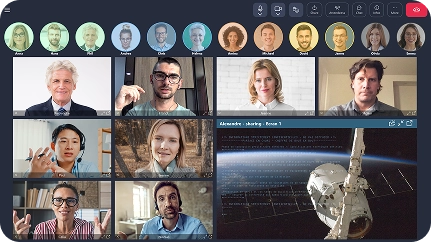
 |
By retaining full ownership of its codebase, Tixeo has had the freedom to innovate, developing its own multipoint end-to-end encryption technology with the highest levels of confidentiality. |
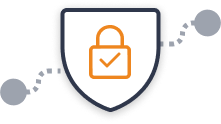 |
By writing its own source code, Tixeo strengthens the security of its solution and avoids dependence on external components that may introduce uncontrollable vulnerabilities. |
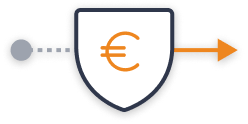 |
Since its founding in 2003, Tixeo has been entirely self-financed, with no external investment. This financial independence ensures freedom to innovate and reinforces its technological sovereignty. |

En restant propriétaire, Tixeo a pu laisser libre cours à ses choix d’innovation et a développé une technologie de chiffrement de bout en bout multipoint, avec des garanties de confidentialité maximales.

En développant son propre code source, Tixeo renforce la sécurité de sa solution et évite toute dépendance à des composants tiers susceptibles de présenter des vulnérabilités non maîtrisables.

Depuis sa création en 2003, Tixeo dispose de capitaux propres et ne bénéficie d’aucun fonds d’investissement. Cette indépendance économique contribue à sa liberté d’innovation et sa souveraineté.
Your software supply Chain:
a hidden cybersecurity weakness
Cyber attackers can bypass your cybersecurity measures by targeting
your suppliers, subcontractors, or communication tools.


Risk #1: Your provider suffers a cyberattack
If your provider is compromised, their breach could expose your strategic data.
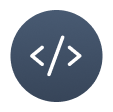

Risk #2: Your software is compromised
Hackers may embed vulnerabilities in an application or service before it even reaches you—via infected code or exploited third-party dependencies.
Without knowing it, your organisation could deploy malicious software internally.


The SolarWinds Case
In December 2020, a malware insertion into the Orion network management software led to a major espionage operation and exfiltration of sensitive data.
More than 18,000 customers—including US government agencies and critical businesses—were affected.
Advantages of Tixeo’s proprietary technology

Data control
Tixeo’s secure videoconferencing technology is fully self-managed to better protect your data and ensure complete confidentiality. Minimising technological dependency enhances your organisation’s cyber-resilience.
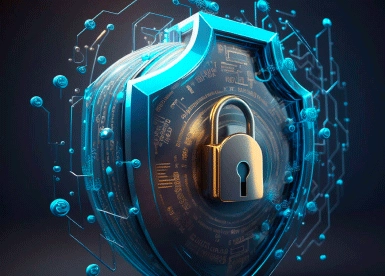
Built-in security by design
Security is the foundation of Tixeo’s architecture, developed without reliance on third-party components. Its Secure by Design approach ensures vulnerabilities are addressed at the source—before the solution is released.

Transparency commitments
Tixeo builds trust through transparency and excellence in cybersecurity. For this reason, selected clients are given the option to audit its source code under strict conditions.

Tixeo’s secure videoconferencing technology has held CSPN certification
from ANSSI since 2017.

Tixeo’s secure videoconferencing technology has held CSPN certification from ANSSI since 2017.
In a time of cyberwarfare,
end-to-end encryption is essential
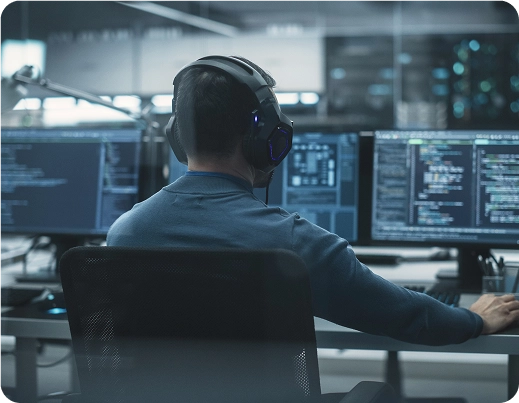

 Renaud Ghia,
Renaud Ghia,
CEO & Founder of Tixeo.
«Supply chain attacks are being amplified by geopolitical tensions. State and state-sponsored actors exploit technological vulnerabilities and interdependencies to infiltrate sensitive systems.
A striking example is China’s industrial espionage targeting subcontractors in the European aerospace sector.
To protect themselves, sensitive organisations must audit their suppliers rigorously and adopt certified, secure communication solutions from the ground up.»
Proprietary vs open-source videoconferencing
Your videoconferencing solution is used not only for internal communications but also for exchanges with external partners and service providers.
That’s why it represents a strategic vulnerability.
What are the security guarantees of a proprietary solution compared to open source?
Security Criteria
Proprietary Software
Open-Source Software
Code maintenance
![]()
Dedicated internal team
➖ Varies by project
Vulnerability management
![]()
Fast patching
➖ Fast if active
❌ otherwise
Technical support
![]()
Dedicated helpdesk
➖ Community or paid
Legal compliance
![]()
Contractual guarantees
❌ No direct guarantee
Quality control
![]()
Standards and testing
➖ Project-dependent
Security audits
![]()
Regular and planned
➖ Rare
Dependency updates
![]()
Centralised monitoring
➖ Patchy,
❌ often outdated
Single point of accountability
![]()
Clear responsibility
❌ Multiple actors
![]()
Fully meets the criterion
➖ Context-dependent or partial
❌ Weak or absent guarantee
Note: not all proprietary providers are equal. Some build their technology entirely in-house, while others rely heavily on open-source libraries.
As an independent French company, Tixeo has developed proprietary secure videoconferencing technology for over 20 years.
Recognised with the “Cybersecurity Made in Europe” label, Tixeo brings two decades of trusted expertise to the development of secure, sovereign communications technologies for Europe’s most critical sectors.

As an independent French company, Tixeo has developed proprietary secure videoconferencing technology for over 20 years.
Recognised with the “Cybersecurity Made in Europe” label, Tixeo brings two decades of trusted expertise to the development of secure, sovereign communications technologies for Europe’s most critical sectors.
Everything You Need to Know About Tixeo’s Proprietary Technology
Definition and differences with open-source
What is proprietary technology?
Proprietary technology refers to a product or system exclusively owned by a company. In software terms, this means the source code is not publicly available and is protected by intellectual property rights.
There are two key models of proprietary vendors:
- Companies that build their entire technology stack in-house
- Companies that assemble solutions using mostly open-source components
How does open source differ from proprietary software?
The main difference lies in licensing. Open source software allows users to view, modify, and share the code. Proprietary software restricts these rights, placing emphasis on controlled use and maximum security.
What are the pros and cons of open source?
While transparency is a strength, it doesn’t guarantee security. It’s often unclear who contributes to the codebase, and external libraries can introduce vulnerabilities.
Few organisations regularly audit the open-source code they use.
According to the 2024 Open Source Security and Risk Analysis Report, almost 50% of the 1,000 commercial open-source codebases studied had no development activity for over 24 months. Moreover, 91% included components that were at least ten versions behind the latest release.
* Rapport 2024 Open Source Security and Risk Analysis Report – study conducted on codebases across 17 industry sectors during 2023.
Tixeo’s security guarantees
Why choose a proprietary videoconferencing provider?
A company that owns its technology offers stronger control and security. It also typically provides dedicated technical support—unlike most open-source platforms.
However, the provider’s jurisdiction matters: in some countries, legal frameworks may require built-in backdoors, which pose a serious risk.
What guarantees does Tixeo offer?
Tixeo’s videoconferencing technology is CSPN-certified, features end-to-end encryption, and includes strong access controls.
The company is financially independent and avoids relying on third-party technologies for critical components.
To reinforce transparency, Tixeo allows selected clients to audit its source code under specific conditions—especially when operating in high-security sectors.
Like reviewing a bank’s vault blueprints, auditing sensitive software must follow strict security protocols and meet precise operational needs.
How does Tixeo demonstrate its independence?
Tixeo has maintained full control over its innovation and funding for more than 20 years.
By limiting its external dependencies, the company ensures resilience against service disruptions, foreign influence, or political pressure.
This level of independence is increasingly vital as digital sovereignty becomes a strategic priority for critical sectors.
Definition and differences with open-source
What is proprietary technology?
Proprietary technology refers to a product or system exclusively owned by a company. In software terms, this means the source code is not publicly available and is protected by intellectual property rights.
There are two key models of proprietary vendors:
- Companies that build their entire technology stack in-house
- Companies that assemble solutions using mostly open-source components
How does open source differ from proprietary software?
The main difference lies in licensing. Open source software allows users to view, modify, and share the code. Proprietary software restricts these rights, placing emphasis on controlled use and maximum security.
What are the pros and cons of open source?
While transparency is a strength, it doesn’t guarantee security. It’s often unclear who contributes to the codebase, and external libraries can introduce vulnerabilities.
Few organisations regularly audit the open-source code they use.
According to the 2024 Open Source Security and Risk Analysis Report, almost 50% of the 1,000 commercial open-source codebases studied had no development activity for over 24 months. Moreover, 91% included components that were at least ten versions behind the latest release.
* Rapport 2024 Open Source Security and Risk Analysis Report – study conducted on codebases across 17 industry sectors during 2023.
Definition and differences with open-source
Why choose a proprietary videoconferencing provider?
A company that owns its technology offers stronger control and security. It also typically provides dedicated technical support—unlike most open-source platforms.
However, the provider’s jurisdiction matters: in some countries, legal frameworks may require built-in backdoors, which pose a serious risk.
What guarantees does Tixeo offer?
Tixeo’s videoconferencing technology is CSPN-certified, features end-to-end encryption, and includes strong access controls.
The company is financially independent and avoids relying on third-party technologies for critical components.
To reinforce transparency, Tixeo allows selected clients to audit its source code under specific conditions—especially when operating in high-security sectors.
Like reviewing a bank’s vault blueprints, auditing sensitive software must follow strict security protocols and meet precise operational needs.
How does Tixeo demonstrate its independence?
Tixeo has maintained full control over its innovation and funding for more than 20 years.
By limiting its external dependencies, the company ensures resilience against service disruptions, foreign influence, or political pressure.
This level of independence is increasingly vital as digital sovereignty becomes a strategic priority for critical sectors.
Tixeo’s security guarantees
Why choose a proprietary videoconferencing provider?
A company that owns its technology offers stronger control and security. It also typically provides dedicated technical support—unlike most open-source platforms.
However, the provider’s jurisdiction matters: in some countries, legal frameworks may require built-in backdoors, which pose a serious risk.
What guarantees does Tixeo offer?
Tixeo’s videoconferencing technology is CSPN-certified, features end-to-end encryption, and includes strong access controls.
The company is financially independent and avoids relying on third-party technologies for critical components.
To reinforce transparency, Tixeo allows selected clients to audit its source code under specific conditions—especially when operating in high-security sectors.
Like reviewing a bank’s vault blueprints, auditing sensitive software must follow strict security protocols and meet precise operational needs.
How does Tixeo demonstrate its independence?
Tixeo has maintained full control over its innovation and funding for more than 20 years.
By limiting its external dependencies, the company ensures resilience against service disruptions, foreign influence, or political pressure.
This level of independence is increasingly vital as digital sovereignty becomes a strategic priority for critical sectors.
